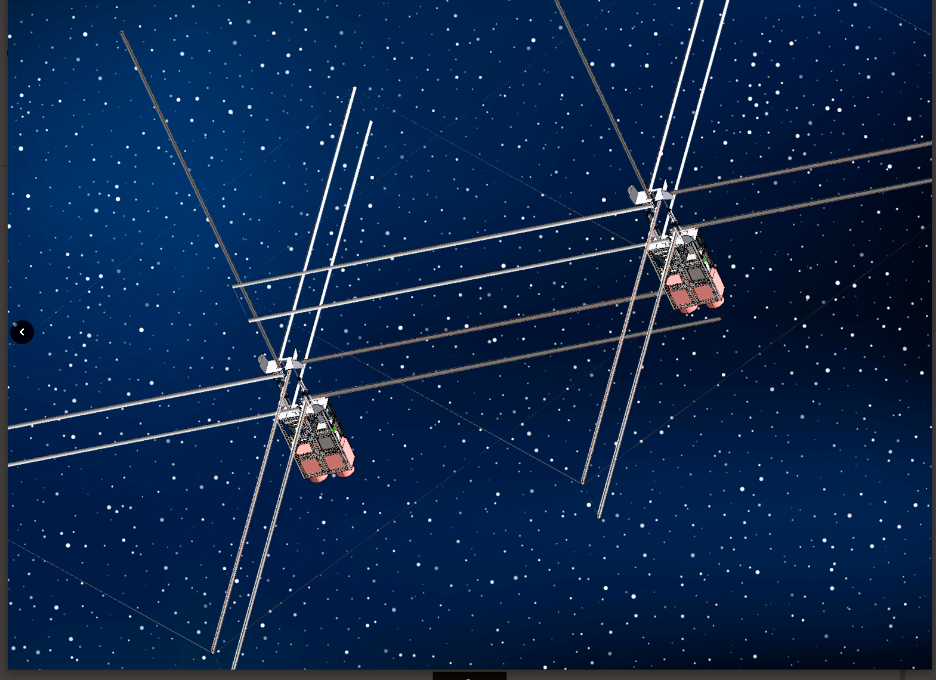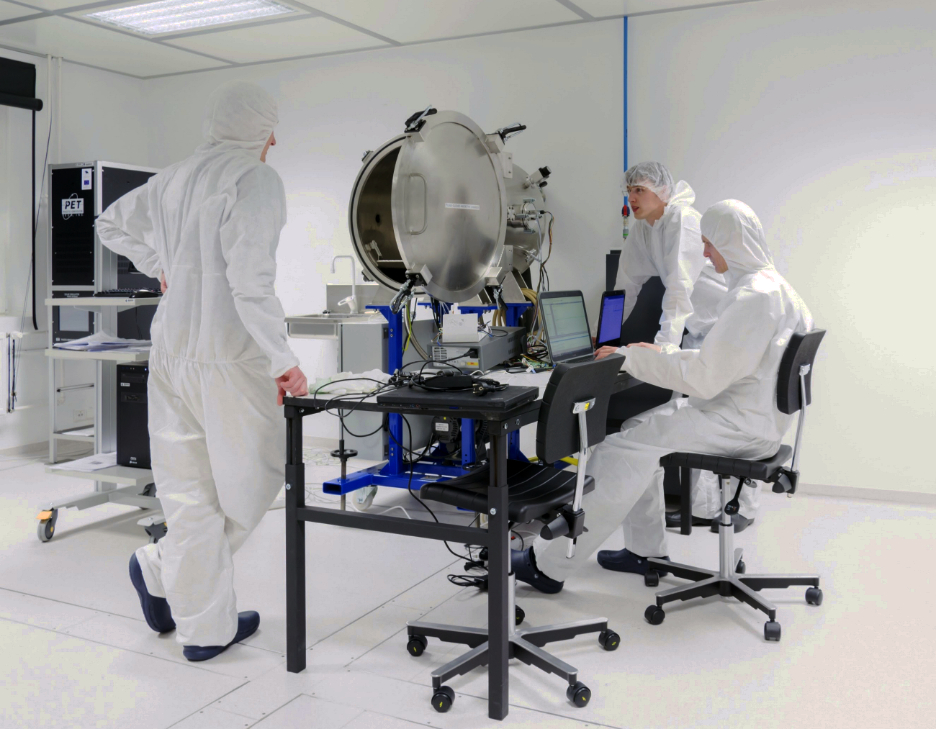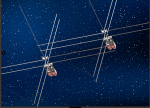
Artistic rendition of the AERO and VISTA smallsats.
NanoAvionics has received a contract to build two nanosatellites for the Massachusetts Institute of Technology (MIT) AERO-VISTA mission team at the recently opened NanoAvionics manufacturing facility in Columbia, Illinois, USA.
Funded by NASA’s H-TIDeS (Heliophysics Technology and Instrument Development for Science program), the mission is led by MIT and includes several partners: MIT Haystack Observatory, MIT Lincoln Laboratory, Merrimack College, Dartmouth College, and Morehead State University. Morehead State is responsible for bus contracting and ground operations services.
The two identical spacecraft: AERO (Auroral Emissions Radio Observer) and VISTA (Vector Interferometry Space Technology with AERO) will be based on NanoAvionics’ standardized pre-integrated and pre-qualified 6U nanosatellite bus M6P. Both will house a novel electromagnetic vector sensor antenna developed by MIT’s Lincoln Laboratory.
The aim of this first in-space demonstration is to study from an LEO unexplained features about the nature and sources of radio emission from the Earth’s aurora. With a targeted launch in 2022, the AERO-VISTA mission is expected to last three months.
To accomplish the AERO-VISTA mission, the vector sensor onboard the two smallsats will measure amplitude and phase of radio emission in the Earth’s aurora zone – the geographic area above the Arctic Circle where the Northern Lights appear. Using a sun-synchronous polar orbit will allow sensing of radiation not visible from Earth.
In addition to their respective mission, coordinated observations by the pair will demonstrate interferometry, merging or superimposing waves to create an interference pattern from which information about the source can be extracted. Interference measures how two or more waves interact, akin to throwing stones into a calm pool. If successful and validated in flight, the expected result will produce higher-resolution data providing deeper insight into phenomena investigated by space-based radio telescopes.
According to Dr. Philip Erickson, principal investigator (PI) of AERO, the aim of the NASA-funded mission is to greatly improve knowledge of Earth’s aurora by studying its fascinating radio emissions from orbit. This is an ambitious task and takes a talented set of dedicated professionals to solve the many technical and science challenges of small satellite platforms. The resulting understanding of the near-Earth space environment benefits all who seek to learn about the natural world.
Dr. Frank Lind, VISTA PI, stated that, ultimately space science missions are about people exploring our world. It takes a great team of people to make that happen. NanoAvionics is now a key part of the team and all are looking forward to designing and building these satellites with them.
Dr. Benjamin K. Malphrus, professor of Space Science at Morehead State University and co-PI on the mission , added that the room for discovery in this area is wide open and there are many aspects of the aurora that are not well understood. The vector sensor antenna is unlike anything that has previously flown. It has the potential to produce significant science returns. He continued that after a long and competitive search process, the team selected NanoAvionics to provide the two satellite buses. NanoAvionics is an innovative company with a highly capable bus and was an excellent fit for this potentially significant science mission.
F. Brent Abbott, CEO of NanoAvionics US, stated that being part of this first-of-its-kind MIT research mission and working with such an august team is very exciting and the selection of NanoAvionics as the mission integrator shows the confidence in the company’s technology and strong performance of the firm’s nanosatellite buses.

NanoAvionics thermal vacuum testing of the company’s smallsats.

